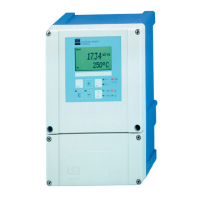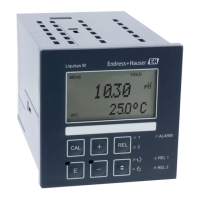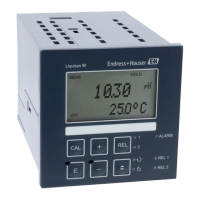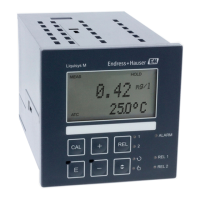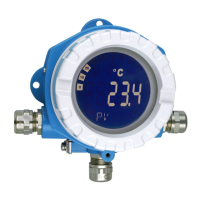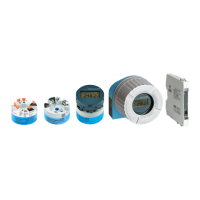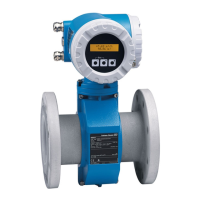Liquisys M CLM223/253 Commissioning
Endress+Hauser 37
Ultrapure water compensation (for conductive sensors)
For pure and ultrapure water, algorithms are saved in the transmitter that account for the
self-dissociation of ultra pure water and its strong temperature dependency. They are used
for conductivities of approx. 100 μS/cm.
Two compensation types are available:
• NaCl ultrapure water compensation: It is optimized for pH neutral impurities.
• HCl ultrapure water compensation: It is optimized for measurement of the so-called acid
conductivity after a cation exchanger. It is also suitable for ammonia (NH
3
) and caustic
soda (NaOH).
The ultrapure water compensations always refer to a reference temperature of 25 °C
(77 °F).
The lowest indicated conductivity is the theoretical limit value of ultrapure water at
25 °C (77 °F), i.e. 0.055 μS/cm.
Temperature compensation with table
In case of transmitter with Plus package you can enter a table with temperature coefficients
in relation to temperature. When using the alpha table function for temperature
compensation, the following conductivity data of the process medium to be measured is
required:
Value pairs of temperature T and conductivity with:
• (T
0
) for the reference temperature T
0
• (T) for temperatures which occur in the process
a0008944
Fig. 24: Determination of temperature coefficient
ARequired data
BCalculated
values
Use the following formula to calculate the values for the temperatures occurring in your
process:
Enter the T value pairs calculated with this formula in the fields T4 and T5 of the function
group "ALPHA TABLE".
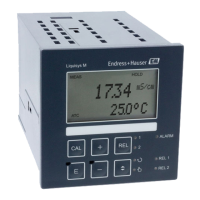
